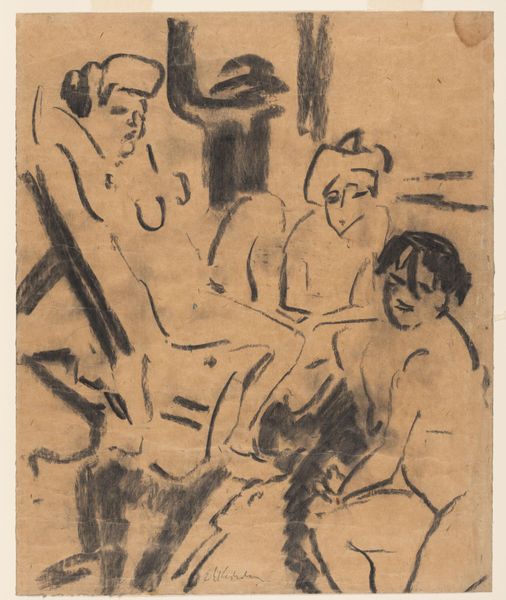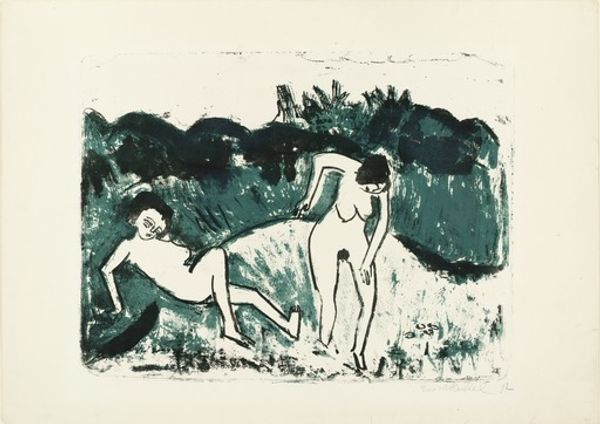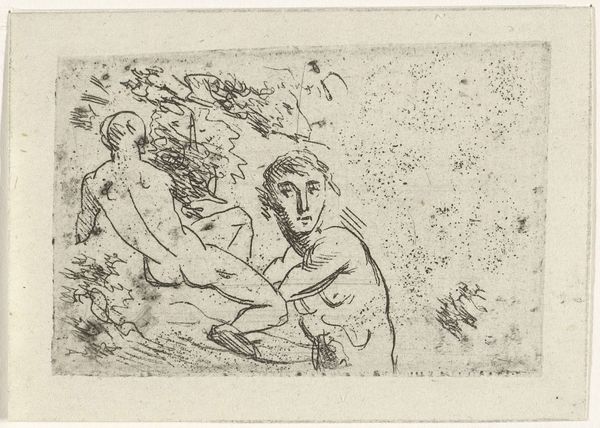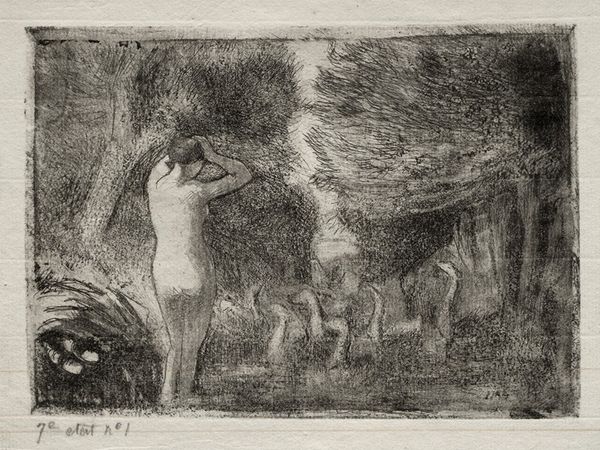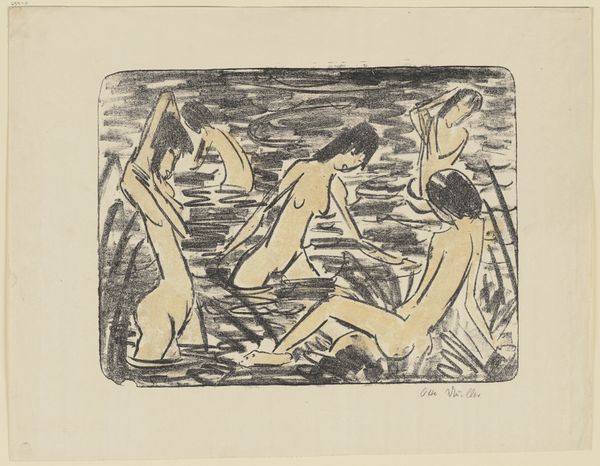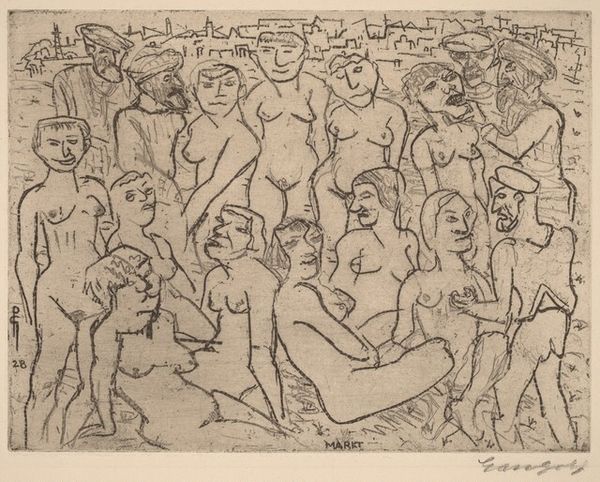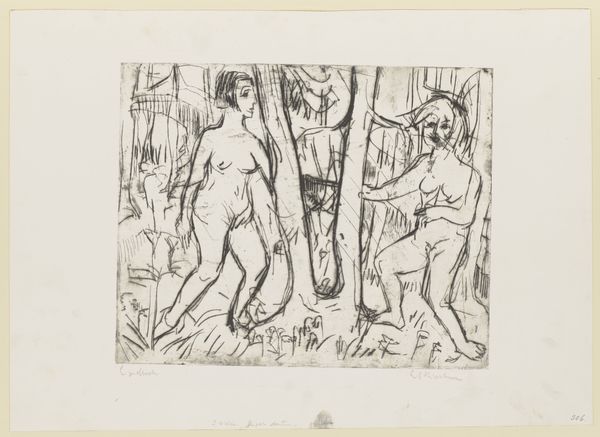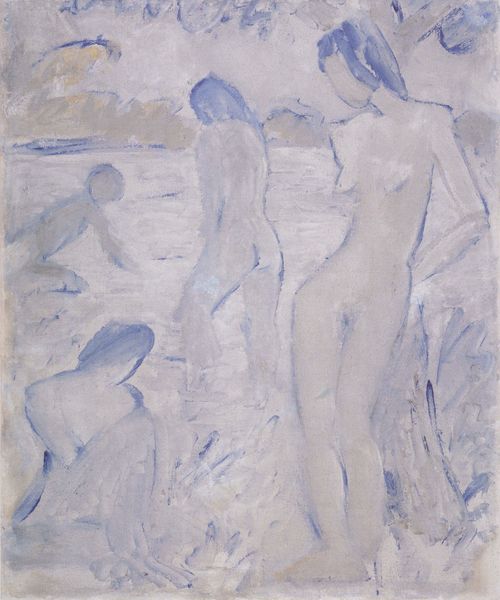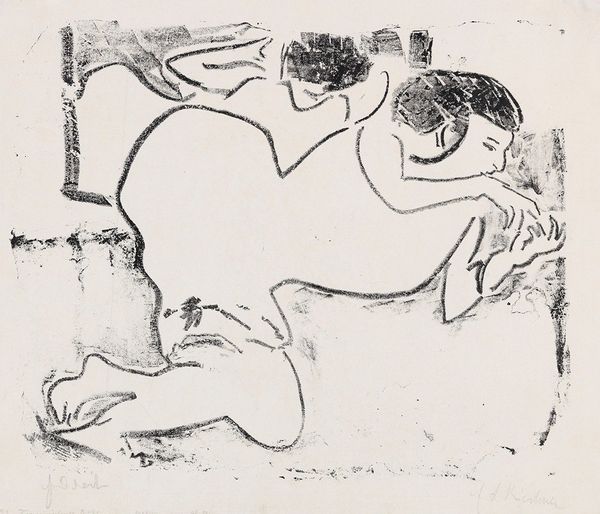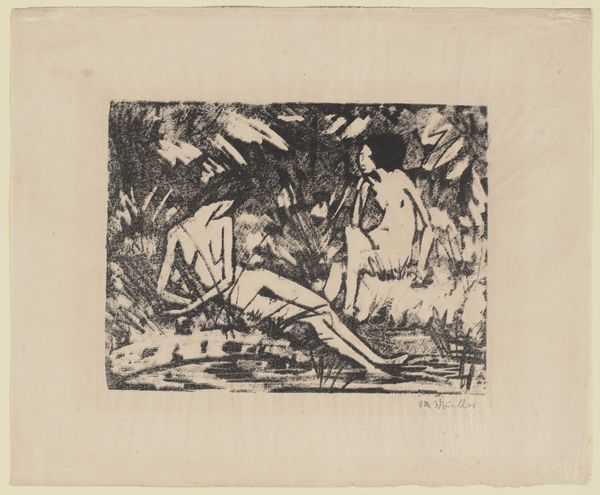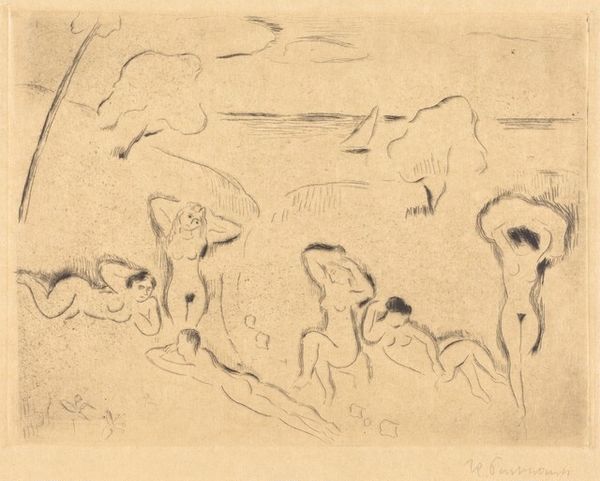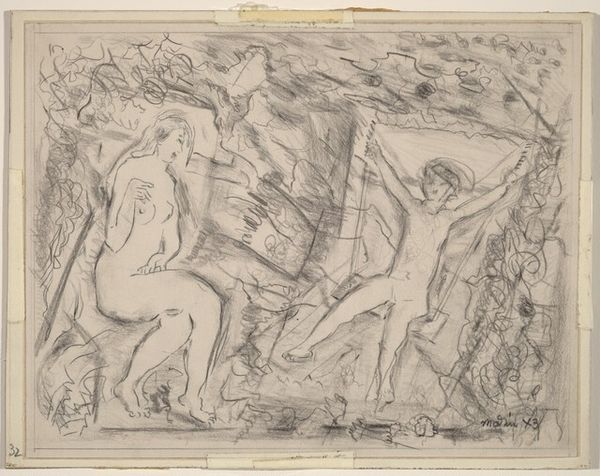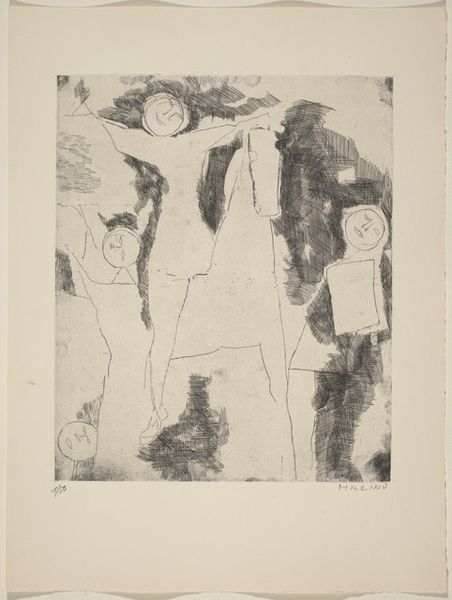
Dimensions: plate: 17.8 x 20.5 cm (7 x 8 1/16 in.) sheet: 28.4 x 34.1 cm (11 3/16 x 13 7/16 in.)
Copyright: National Gallery of Art: CC0 1.0
Curator: Here we have Hans Purrmann’s etching from 1918, entitled “Four Bathers." Editor: It feels quiet, contemplative. The sepia tone and loosely defined forms give it a timeless quality, despite the figures' clearly modern haircuts. What sort of world was Purrmann creating here? Curator: It’s important to remember the historical context: 1918 was the final year of World War I. Purrmann, though German, spent much of the war in Switzerland, in close proximity to other German artists who had either been excused from service or had fled there to escape war conscription. The landscape is also an artistic construct. Editor: Yes, and the mark-making! It looks like he built up a very tactile surface in the etching process. I’m intrigued by the texture he’s achieved here, considering how intimate and immediate the scene feels. What do we know of his production and making processes? Curator: Well, etching offered Purrmann an efficient and easily accessible way to distribute images. It’s a stark contrast to the monumentality often associated with academic art. "Four Bathers" becomes more accessible because it is a print. But this intimacy also reinforces ideas about leisure, particularly that available to men of a certain social status. Editor: So the context makes the art and is made by the art! And I think it would be hard to ignore those connotations here. The positioning of the figures—some directly engaging the viewer, others turned away or reaching towards each other—implies a communal activity yet allows each bather some amount of autonomy and contemplation. Curator: The loose definition of forms gives the work a dreamlike feel, perhaps also serving as a visual allegory to escape the grim realities of war. Though rooted in material reality through the printed image and the artist's context, the landscape operates beyond a direct one-to-one translation. Editor: Considering what we know about its making and place in culture, I’m struck by how the mundane ritual—swimming—could become something both intensely personal and profoundly resonant. Curator: Yes, and by understanding this, the imagery encourages one to consider leisure at the intersection of history, form, and practice.
Comments
No comments
Be the first to comment and join the conversation on the ultimate creative platform.
